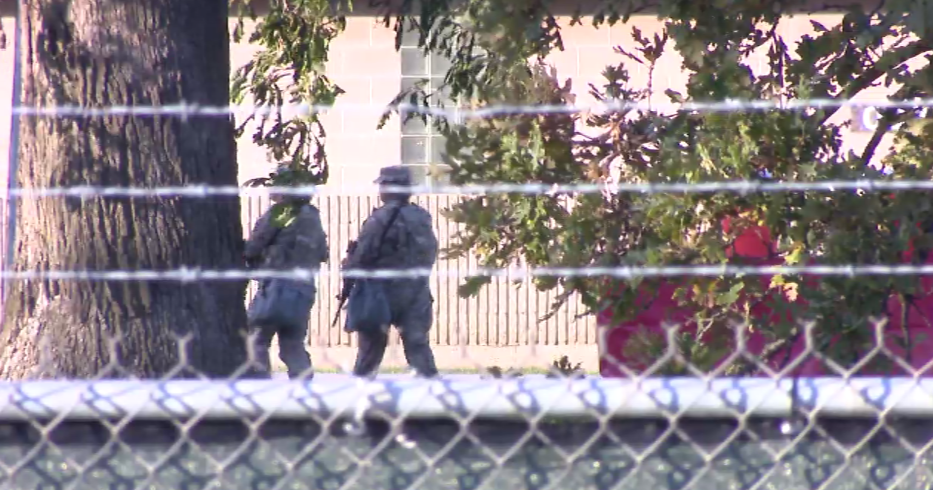A federal judge blocked the National Guard deployment to the Chicago area until there’s a decision from the Supreme Court proceedings.
But what are the Texas guard members in Illinois doing since they can’t be deployed?
At the Army Reserve Center in Elwood, Illinois, a fence still surrounds the perimeter, with big trucks to block what is going on inside. However, soldiers were still inside and appeared to be actively training.
The reserve is where 200 National Guard soldiers from Texas have been stationed in the Chicago area. They were originally brought to protect federal agents and facilities, but until a legal battle is settled, the Texas troops remain there.
Richard Hayes, a former commander of the Illinois National Guard, said he’s never seen anything like this in his career.
Soldiers at the base on Monday were seen running, walking, and training. Hayes says this is what they should be doing.
“When you have situations where your mission changes abruptly, where you are not doing it all of a sudden, you revert back to the plans of your training,” he said.
The base is set up with temporary living quarters and areas to eat. The 200 guard members are in Illinois for at least 60 days, which they started about three weeks ago.
“If they don’t get their orders extended, they will be released from active duty,” Hayes said.
He said the men and women have jobs back home that they will go back to, but while they are in Illinois, he said it is still costing taxpayers millions of dollars.
The cost to deploy National Guard troops varies by mission and size. In Los Angeles, 4,000 troops were sent to California for over 60 days. Congressional testimony estimated the cost as $135 million
In Illinois, 200 Texas troops have been sent to Elwood and have spent about 30 days so far, costing taxpayers nearly $3.5 million.
“You’re going to have to feed them, and you are going to have to house them, so you are going to have to hire vendors or buy food and have the cooks cook the food,” Hayes said.
Whether the Texas guardsmen will ever be deployed will depend on a ruling by the Supreme Court. There’s no word on when that could happen.

